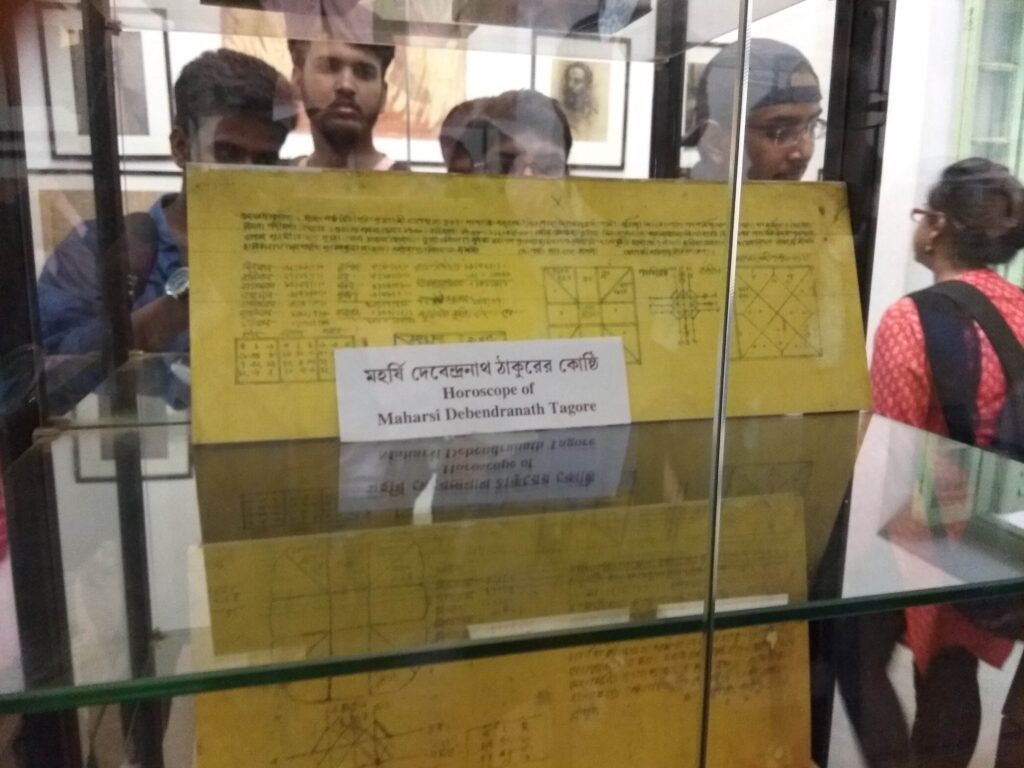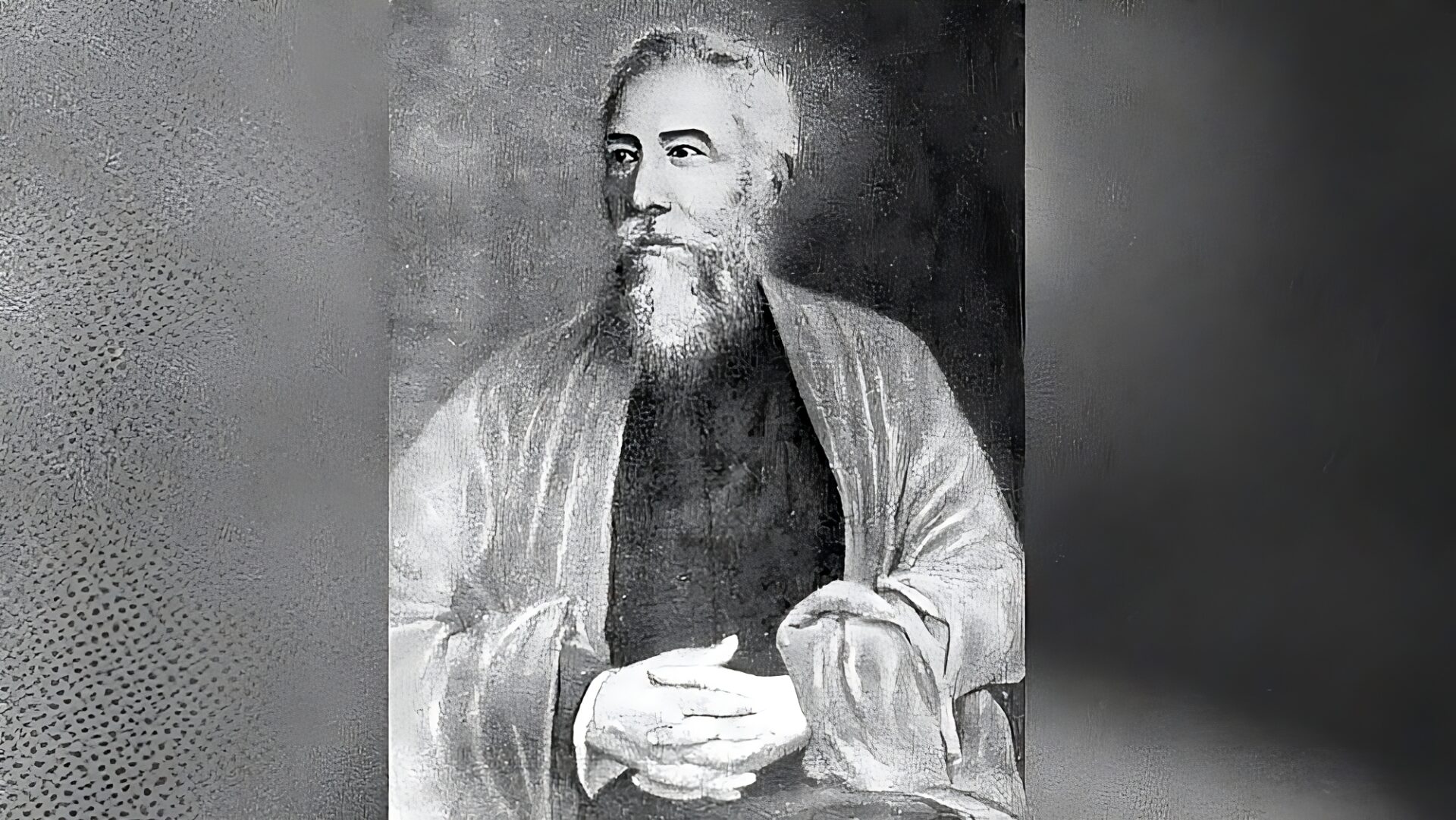Maharshi Debendranath Tagore: The Father of Rabindranath and a Pioneer in Religious Reform (1817-1905)
Debendranath Tagore (1817-1905) was a pivotal figure in the history of India, particularly in the context of Bengal’s cultural and religious transformation during the 19th century. Known as the father of Rabindranath Tagore, the famous Bengali poet and Nobel laureate, Maharishi Debendranath Tagore was a Hindu philosopher, a religious reformer and a leading force in the Brahmo Samaj. His life’s work, blending spirituality and social reform, continues to influence modern India.
Debendranath Tagore, also referred to as Maharshi, was a major contributor to the Bengal Renaissance, alongside contemporaries like Raja Ram Mohan Roy. His efforts to reform Hinduism through rationalism and introspection left a lasting legacy. His journey from a privileged upbringing to becoming a religious philosopher and leader of the Brahmo Samaj is a story of personal transformation and societal impact.
Debendranath Tagore’s Early Life and the Influence of Dwarkanath Tagore
Born on May 15, 1817, in Calcutta, Debendranath Tagore belonged to the illustrious Tagore family of Jorasanko. His father, Prince Dwarkanath Tagore, was a wealthy businessman, entrepreneur, and philanthropist deeply involved in the cultural and social reforms of Bengal. Debendranath’s mother, Digambari Devi, also played a crucial role in shaping his early values.
Educated at home under private tutors, Debendranath studied Sanskrit, Persian, and Western philosophy. His upbringing in the culturally rich environment of the Jorasanko Thakur Bari exposed him to various intellectual ideas, laying the foundation for his eventual spiritual journey. The influence of his father, a close ally of Raja Ram Mohan Roy, introduced Debendranath to the ideals of rational thought and progressive social reform, which would later shape his path as a Hindu philosopher and religious reformer.
Debendranath Tagore and Raja Ram Mohan Roy’s Brahmo Samaj: Revitalizing the Reformist Movement
Debendranath’s major contribution came in the form of his work with the Brahmo Samaj, a movement originally founded by Raja Ram Mohan Roy in 1828 to reform Hinduism and promote monotheism. In 1843, Debendranath formally joined the Brahmo Samaj and breathed new life into the movement by focusing on monotheism, rejecting idol worship, and advocating social reforms such as women’s education and the abolition of child marriage.
After assuming leadership of the Brahmo Samaj, Debendranath focused on expanding its reach. He introduced new doctrines and teachings through the Tattwabodhini Sabha, which he established in 1839. Under his guidance, the Sabha began publishing the Tattwabodhini Patrika, a monthly journal that became a vehicle for spreading rational thought and Brahmo Dharma to a broader audience. The journal played a crucial role in the dissemination of Hindu scriptures and philosophical ideas that resonated with the progressive reformist ideals of the time.

Challenging the Status Quo: Debendranath’s Role in Social and Religious Reform
As a social and religious reformer, Debendranath Tagore was relentless in his efforts to challenge the oppressive customs and practices prevalent in Hindu society. He actively worked against child marriage, polygamy, and the caste system, aiming to create a more equitable society. His leadership in the Brahmo Samaj helped expand the movement’s focus on social justice and equality.
One of Debendranath’s key philosophical contributions was his rejection of the infallibility of the Vedas. Unlike many of his contemporaries, Debendranath believed that the Vedas should be questioned and interpreted rationally. His critical stance on the scriptures led to the compilation and publication of the Brahma Dharma Grantha, which offered a more accessible and theistic interpretation of religious principles. This text became foundational to the beliefs of the Adi Brahmo Samaj, the branch of the movement led by Debendranath after its split from Keshab Chandra Sen’s more radical faction in 1866.
The Founding of Santiniketan: A Vision of Peace and Learning
In 1863, Maharshi Debendranath Tagore founded Santiniketan, which was originally a spiritual retreat, or ashram, in rural West Bengal. Meaning “abode of peace,” Santiniketan was Debendranath’s answer to the need for a serene space dedicated to meditation, learning, and spiritual growth. The ashram would later be expanded by his son Rabindranath Tagore, who transformed it into Visva-Bharati University in 1921.
Debendranath’s establishment of Santiniketan signaled his deep commitment to promoting Hindu spiritual values beyond the confines of ritualistic practices. Here, under the shade of the famous Chhatim trees, Debendranath encouraged self-realization, meditation, and introspection—key tenets of his spiritual philosophy.
Brahma Dharma: Debendranath’s Literary and Philosophical Contributions
As a Bengali philosopher, Debendranath Tagore’s contributions extended beyond activism. His most notable written work, Brahma Dharma, laid out the principles of Brahmoism—a blend of Hinduism and modern rational thought. This text offered guidance on living a moral life based on monotheism, introspection, and self-realization.
Through his writings, Debendranath sought to make religious teachings accessible to the wider Bengali audience. His translation work on the Upanishads played a vital role in spreading Hindu philosophical ideas, further cementing his legacy as a religious reformer and thinker.
The Legacy of Maharshi Debendranath Tagore (1817-1905)
Debendranath Tagore’s influence extends well beyond his leadership of the Brahmo Samaj. His commitment to social and religious reform transformed the way Hinduism was perceived and practiced in Bengal, promoting inclusivity and rationalism. His establishment of Santiniketan laid the groundwork for a new approach to education and spirituality, one that continues to thrive today.
Debendranath’s son, Rabindranath Tagore, built on his father’s work, but it was Debendranath who first created the intellectual and spiritual foundation upon which the Tagore family legacy rests. His ability to harmonize spirituality with rational thought remains a guiding light for those seeking balance between tradition and modernity.
Conclusion: Debendranath Tagore’s Enduring Influence
Maharshi Debendranath Tagore’s life was dedicated to reimagining Hinduism in a way that was progressive, inclusive, and rational. His contributions to the Brahmo Samaj, his establishment of Santiniketan, and his philosophical writings continue to inspire spiritual and intellectual thought in India. As the father of Rabindranath Tagore, Debendranath laid the groundwork for one of India’s most influential families, and his legacy of reform, compassion, and intellectual curiosity remains a beacon for future generations.
Frequently Asked Questions (FAQs)
1. Who was Debendranath Tagore?
Debendranath Tagore (1817-1905), also known as Maharshi Debendranath, was a prominent Hindu philosopher and religious reformer. He was instrumental in leading the Brahmo Samaj after Raja Ram Mohan Roy, promoting monotheism, social reform, and rejecting idol worship.
2. What was Debendranath Tagore’s connection with Raja Ram Mohan Roy?
Debendranath Tagore and Raja Ram Mohan Roy were pivotal in the formation of the Brahmo Samaj, a movement aimed at reforming Hinduism. Although Roy founded the Brahmo Sabha, Debendranath revitalized it in 1843 and shaped it into a powerful reformist organization that influenced Bengal and India.
3. What role did Debendranath play in the Bengal Renaissance?
As a Hindu philosopher and religious reformer, Debendranath Tagore was a key figure in the Bengal Renaissance. Alongside Raja Ram Mohan Roy and others, he promoted social change, religious reform, and the spread of rational ideas through publications like the Tattwabodhini Patrika.
4. What is the significance of the year 1905 in Debendranath Tagore’s life?
Debendranath Tagore passed away on January 19, 1905. By then, he had become known as a Maharshi and left behind a legacy of religious reform, social change, and education through his leadership of the Brahmo Samaj and the founding of Santiniketan.
5. How did Debendranath Tagore influence Brahmoism?
Debendranath Tagore played a crucial role in the development of Brahmoism. He introduced new ideas like Brahma Dharma and expanded the movement’s reach. He also questioned the infallibility of the Vedas and encouraged personal introspection and rationality in religious practice.
6. What is the connection between Debendranath Tagore and Ishwar Chandra Vidyasagar?
Debendranath Tagore and Ishwar Chandra Vidyasagar were contemporaries who worked towards similar goals of social reform in Bengal. Vidyasagar’s efforts in promoting widow remarriage and women’s education complemented Debendranath’s work within the Brahmo Samaj in addressing issues like child marriage and polygamy.
7. How did Debendranath Tagore’s leadership influence his family, particularly Rabindranath Tagore?
Debendranath Tagore’s leadership in the Brahmo Samaj and his progressive ideals deeply influenced his son, Rabindranath Tagore. The Tagore family in Jorasanko, particularly under Debendranath’s guidance, became a hub of cultural and intellectual exchange. This atmosphere fostered the creativity and reformist spirit that Rabindranath would carry forward, especially in his establishment of Visva-Bharati University at Santiniketan.
8. What contributions did Debendranath make to the education system in Bengal?
Debendranath Tagore was instrumental in promoting education in Bengal. He founded Santiniketan in 1863 as a spiritual retreat and center for learning, which was later expanded by his son into Visva-Bharati University. He also introduced educational reforms and was actively involved in promoting women’s education.
9. What was the role of Akshay Kumar Datta in Debendranath Tagore’s reformist work?
Akshay Kumar Datta was appointed by Debendranath Tagore as the editor of the Tattwabodhini Patrika, a theological journal that was key to spreading the ideas of the Brahmo Samaj and Brahmo Dharma. Datta’s contributions were essential in shaping the reformist ideas within Bengal, particularly through his collaboration with Debendranath.
10. How did Debendranath Tagore contribute to the translation of Hindu texts?
Debendranath Tagore’s translation work, particularly of the Upanishads and other Hindu texts, was fundamental in making complex religious ideas accessible to a Bengali-speaking audience. His Bengali translation of these texts played a major role in spreading the spiritual and philosophical tenets of Hinduism beyond Sanskrit-speaking elites.
11. What was the significance of Jorasanko Thakur Bari in Debendranath’s life?
The Jorasanko Thakur Bari in north-western Kolkata was the ancestral home of the Tagore family and the birthplace of much of their intellectual legacy. Under Debendranath’s leadership, the house became a center for religious and social discussions, contributing to the spread of Brahmo doctrines and the intellectual culture of the Tagore family.
12. How can Debendranath Tagore’s life be relevant for UPSC preparation?
For students preparing for UPSC prelims, understanding the life of Maharshi Debendranath Tagore is important when studying the Bengal Renaissance, the Brahmo Samaj, and social reform movements in India. His role in religious reform, his leadership in the Brahmo Samaj, and his intellectual contributions make him a significant figure in modern Indian history.
13. What is the Maharshi’s connection with Sri Ramakrishna?
While Debendranath Tagore and Sri Ramakrishna had different religious approaches, both were prominent spiritual leaders during the same period in Bengal. Ramakrishna’s emphasis on universal spirituality and Debendranath’s rational approach to religion and reform coexisted within the larger framework of Bengal’s spiritual renaissance.


I am prepairing for my exam and want to know more about maharishi debenndranath tagore and i landed on this site where i found almost all i want to know about him i want to thank you for the information and giving my best wishes to you to do such as great work.